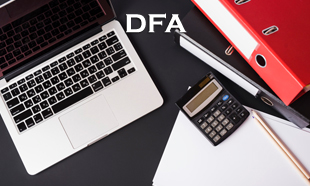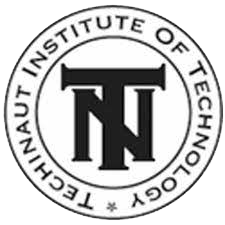0
DIPLOMA IN FINANCIAL APPLICATION" at BOSCOTECH, Tarapur-Khelma, Assam, provides specialized training in financial software and applications at the esteemed Techinaut Institute of Technology, preparing students for financial careers.
In today's fast-paced financial landscape, proficiency in financial applications is essential for individuals seeking to excel in accounting, finance, and business management roles. Boscotech, a Techinaut Institute of Technology franchise based in Tarapur-Khelma, Cachar, Assam, offers a comprehensive 6-month Diploma in Financial Applications (DFA) course. This course is meticulously designed to equip students with a wide range of skills and knowledge to effectively utilize financial software applications to manage accounts, budgets, payroll, taxation, and more.
THE OBJECTIVE OF THE COURSE:
The primary objective of the Diploma in Financial Applications course offered by Boscotech is to empower students with practical skills in using financial software applications for various accounting and finance-related tasks. Over 6 months, students will not only gain theoretical knowledge but also develop hands-on proficiency. This practical approach ensures that students feel confident in real-world scenarios.
- Basics of computers and computer appreciation.
- Learn about popular financial software applications such as Tally for accounting, budgeting, and payroll management.
- Master using word processing, spreadsheet, and presentation packages to create and manage financial documents, reports, and presentations.
- Develop practical skills in using the Internet and email for communication, research, and information retrieval.
- As the course progresses, students will delve into advanced topics such as taxation, inventory management, multiple currencies, and foreign exchange. These topics are strategically included to enhance their financial application skills and prepare them for the complexities of the financial world. This strategic approach ensures that students feel prepared and equipped to handle the challenges they may face in their future careers.
SECTION 1: BASICS OF COMPUTER
In this section, students delve deeper into computer appreciation, learning about computers' history and evolution and their impact on society and the economy. They explore topics such as computer ethics, privacy concerns, and emerging trends in technology.
Students also gain insights into the role of computers in various industries, including banking, finance, healthcare, and manufacturing, and the importance of computer literacy in the modern workplace.
SECTION 2: COMPUTER APPRECIATION
In this section, students delve deeper into computer appreciation, learning about computers' history and evolution and their impact on society and the economy. They explore topics such as computer ethics, privacy concerns, and emerging trends in technology.
Students also gain insights into the role of computers in various industries, including banking, finance, healthcare, and manufacturing, and the importance of computer literacy in the modern workplace.
SECTION 3: WORD PROCESSING
In this section, students learn to use word processing applications such as MS Word or Google Docs to create, format, and edit financial documents. They explore features such as text formatting, paragraph styles, page layout, and inserting tables and graphics into documents.
Students also learn about advanced features such as mail merge, collaboration tools, document sharing, and techniques for creating professional-looking financial reports, letters, and memos.
SECTION 4: SPREADSHEET PACKAGE
In this section, students delve into spreadsheet software such as MS Excel or Google Sheets to organize, analyze, and present financial data. They learn about features such as cells, rows, and columns, as well as formulas, functions, and data manipulation tools.
Students explore techniques for creating and formatting financial spreadsheets, performing calculations, creating charts and graphs, and using advanced features such as pivot tables and macros for economic analysis.
SECTION 5: PRESENTATION PACKAGE
In this section, students learn to use presentation software applications such as Microsoft PowerPoint or Google Slides to create and deliver financial presentations. They explore features such as slide layouts, themes, transitions, and animations and techniques for adding text, charts, and multimedia elements to slides.
Students also learn about practical presentation design principles, including visual hierarchy, simplicity, audience engagement, and strategies for confidently and persuasively delivering financial presentations.
SECTION 6: INTRODUCTION TO THE INTERNET
In this section, students gain an introduction to the Internet and its various components, including the World Wide Web, email, online communication tools, and web browsers. They learn about the Internet's history and evolution and its impact on communication, commerce, and finance.
Students explore techniques for using web browsers to navigate the web, search for financial information, and access online resources such as economic news websites, market data portals, and government websites.
SECTION 7: EMAIL
In this section, students learn about electronic mail (email) and its role in modern communication, including its importance in financial transactions and business correspondence. They gain insights into email's history and evolution and its features and functionalities, including composing, sending, receiving, and organizing messages.
Students explore techniques for managing email accounts, including setting up email clients, configuring email settings, organizing email folders, and filtering spam messages. They also learn about email etiquette and best practices for effective communication in financial and business contexts.
SECTION 8: INTRODUCTION TO TALLY
In this section, students are introduced to Tally, a popular accounting software application businesses use to manage accounts, inventory, and payroll. They learn about Tally's features and functionalities, including its user interface, navigation tools, and data entry options.
Students gain hands-on experience with Tally, learning how to create company profiles, configure accounting settings, and perform basic accounting tasks such as ledger entry, voucher entry, and bank reconciliation.
SECTION 9: ADMINISTRATION IN TALLY
In this section, students explore Tally's advanced features related to administration and security. They learn about user management, role-based access control, and security settings to restrict access to sensitive financial data and ensure data integrity.
Students also learn about backup and restore procedures, data migration, and troubleshooting techniques to maintain the stability and reliability of Tally databases.
SECTION 10: MANAGING GROUPS, LEDGERS, AND VOUCHERS
In this section, students learn the importance of organizing financial data in Tally using groups, ledgers, and vouchers. They explore techniques for creating and managing groups and ledgers to classify and organize financial transactions and methods for creating and managing vouchers to record transactions accurately.
Students also learn about advanced features, such as cost centres and cost categories, which allow them to track expenses and allocate costs across different departments or projects.
SECTION 11: COST CENTERS AND COST CATEGORIES
In this section, students delve into the concepts of cost centres and cost categories in Tally. They learn about the importance of cost centres and categories in tracking expenses and analyzing costs for different departments, projects, or activities.
Students explore techniques for creating and managing cost centres and categories, locating costs, and generating cost-centre-wise reports for financial analysis and decision-making.
SECTION 12: INTRODUCTION TO BUDGETS
In this section, students learn about the importance of budgeting in financial management and planning. They explore the concepts of budgets, including types of budgets such as operating budgets, capital budgets, and cash budgets, as well as techniques for preparing and monitoring budgets.
Students also learn how to create budget masters and scenarios in Tally and techniques for comparing actual performance against budgeted targets and variance analysis.
SECTION 13: INTRODUCTION TO VOUCHER
In this section, students are introduced to vouchers and their role in recording financial transactions in Tally. They learn about different types of vouchers, including payment vouchers, receipt vouchers, journal vouchers, and contra vouchers, and their uses and implications in financial accounting.
Students explore techniques for creating and managing vouchers in Tally and techniques for voucher entry, customization, and printing.
SECTION 14: CURRENCIES (MULTIPLE CURRENCIES AND FOREIGN EXCHANGE)
In this section, students learn about the concepts of multiple currencies and foreign exchange in Tally. They explore techniques for configuring and managing numerous currencies in Tally, including setting up exchange rates, recording foreign currency transactions, and generating currency-wise reports.
Students also learn about advanced features such as foreign currency revaluation and forex gain/loss adjustments to comply with international accounting standards and regulations.
SECTION 15: INVENTORY INFORMATION
In this section, students gain insights into the importance of inventory management in financial accounting and business operations. They learn about inventory concepts, including types of inventory, as well as techniques for valuing and managing inventory.
Students explore techniques for creating and managing inventory masters in Tally, including configuring inventory settings, recording inventory transactions, and generating inventory reports.
SECTION 16: VOUCHER ENTRY
In this section, students learn about voucher entry in Tally and its importance in accurately recording financial transactions. They also explore techniques for creating and managing vouchers, including voucher customization, voucher numbering, and voucher printing.
Students also learn about different types of vouchers, including payment vouchers, receipt vouchers, journal vouchers, and contra vouchers, and their uses and implications in financial accounting.
SECTION 17: DISPLAYING INFORMATION FROM TALLY
In this section, students learn about techniques for displaying and analyzing financial information from Tally. They explore techniques for generating and customizing financial reports, cash flow statements, and trial balances.
Students also learn techniques for filtering, sorting, and grouping data in reports and exporting reports to different file formats for further analysis and presentation.
SECTION 18: INTRODUCTION TO TAXATION
In this section, students gain an introduction to taxation and its implications in financial accounting and business operations. They learn about different types of taxes, including income tax, sales tax, value-added tax (VAT), goods and services tax (GST), and their impact on business profitability and compliance requirements.
Students explore techniques for recording and managing tax transactions in Tally, including methods for calculating and adjusting tax liabilities, filing tax returns, and generating tax reports.
SECTION 19: INTRODUCTION TO PAYROLL
In this section, students learn about payroll management and its importance in human resource management and financial accounting. They explore techniques for recording and managing payroll transactions, including methods for calculating wages, salaries, bonuses, and deductions.
Students also learn techniques for configuring payroll settings, generating pay slips, and filing payroll taxes in Tally, as well as methods for generating payroll reports for compliance and analysis purposes.
CONCLUSION:
The 6-month Diploma in Financial Applications course offered by Boscotech provides students with the skills and knowledge necessary to excel in using financial software applications for various accounting and finance-related tasks. By covering topics such as computer basics, word processing, spreadsheets, presentation packages, Internet, email, and Tally accounting software, the course equips students with the tools and techniques needed to succeed in today's financial landscape.
This course is well-prepared to pursue careers in accounting, finance, and business management roles, working in banking, insurance, retail, manufacturing, and consulting. Whether managing accounts, budgets, payroll, taxation, or inventory, students develop the proficiency and confidence needed to make informed financial decisions and drive business success.


